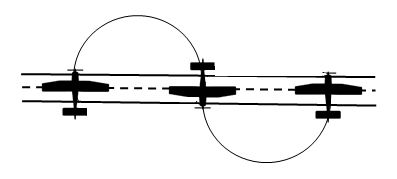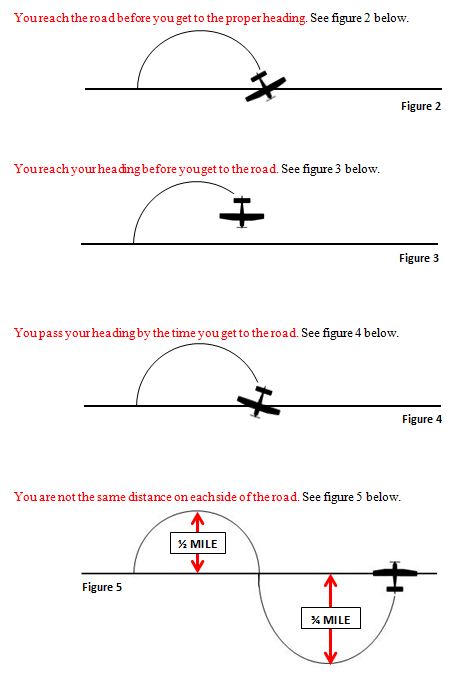What are S-Turns across a road for?
This article is about how an S-Turn helps you and the common mistakes with S-turns across a road. The purpose of S-Turns and other ground reference maneuvers is to prepare you for landing. During the S-Turn you are at an altitude that is the same as the typical traffic pattern. You are learning about maintaining the proper speed, wind correction and also timing your rollouts to be on a specific heading at the right time. You are developing your hand – eye coordination and learning how much control input is needed and when, to accomplish your goal. When you are making your turns in the pattern and timing your turns to final you are doing the same things you’d be doing during an S-Turn.
In an S-Turn across a road, you are putting in just the right amount of bank to make sure you stay the same distance from the road on both sides. During the beginning, the half way point and end of the maneuver, the plane has to be wings level, with the wings parallel to the road just as it reaches the road. See below for these three positions.
What an S-Turn should look like
When the plane starts the maneuver it is perfectly lined up with it’s wings level and parallell to the road. At the half way point, it is excatly the same, but heading the opposite direction. The last part will look exactly as it did when you started. The half circles on each side of the road should be the same distance from the road on both sides. Many people struggle with the timing of the roll out as they get to the road. It needs to be timed so that at the exact moment you are reaching the road, you are just finishing leveling off the wings while pointing the exact opposite direction. You need to do a gradual roll into and out of the maneuver. Many people will hold a steep bank all the way to the road and quickly roll wings level as soon as they get to the road. This is not what you want to do. It has to be a gradual roll out timed to be level just as you reach the road. See below for common mistakes.
Common mistakes and reasons for check-ride failure during an S-turn
While practicing these maneuvers, try to avoid the above mistakes. Judge your distance accurately and time your roll outs properly while holding altitude and airspeed and you will do perfect S-Turns. Yes, you have to hold altitude and speed too! Have fun and don’t forget to enter the maneuver with a tailwind!
As of the writing of this article, we are just about finished with a couple more E-Lessons; one of which is about ground reference maneuvers. For those who have a hard time understanding where to look and how to judge distance, etc. the lesson will have actual IN FLIGHT photos of the maneuver with detailed instructions along with diagrams like those shown above to show you where you are in the maneuver as it is being done.



Hi there very nice blog!! Man .. Excellent .. Wonderful .. I will bookmark your web site. I’m happy to search out helpful info here, thanks for sharing.
I was just asked to do s-turns by tower at KSBN to give way to inbound Lear on a crossing runway. Came in handy.
Great blog. I come here from the AOPA forums. I’ve only done S-Turns a couple of times with my instructor. Both times I’ve been concentrating on maintaining my altitude and rolling out at the correct times. I’d like to try it with some wind… so far it’s been calm.
Welcome Joe! Please look around the site and let us know if there’s anything you’d like to see here that could help you as a student pilot.
I appreciate that. I’ll look around and come back whenever I can!